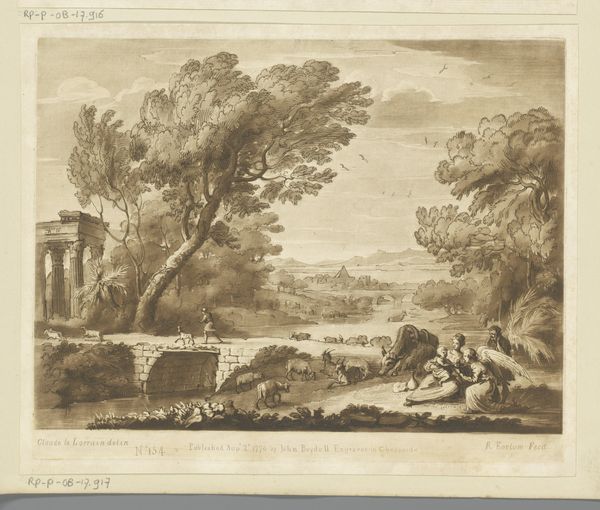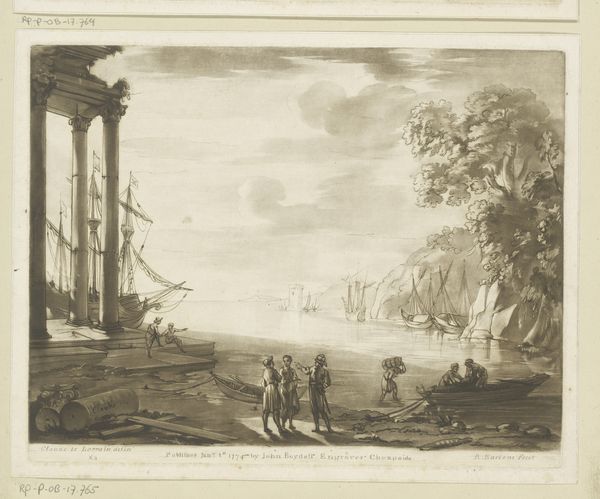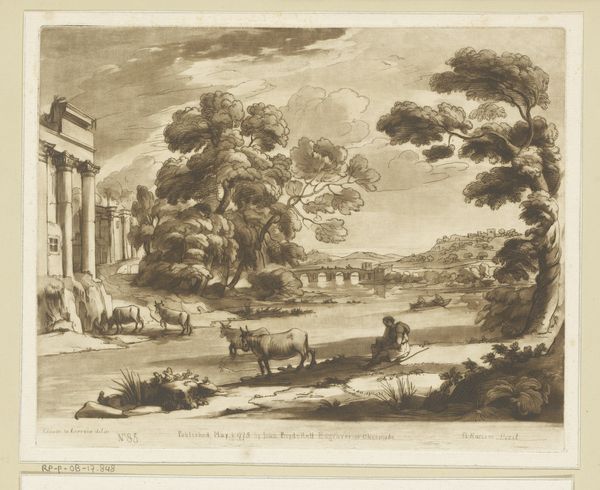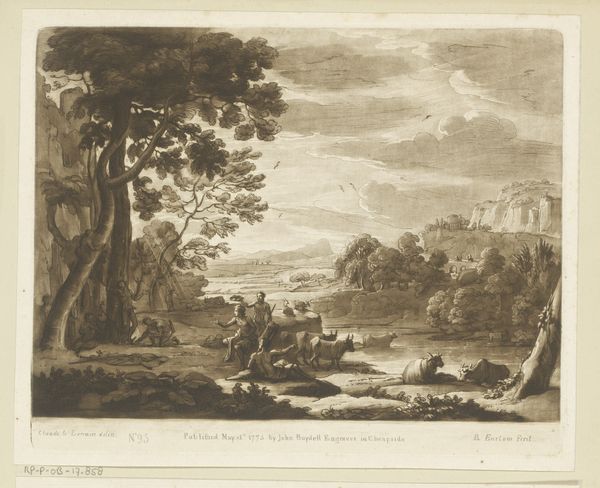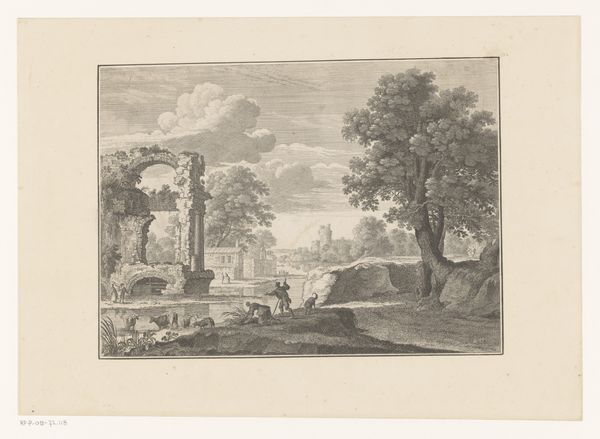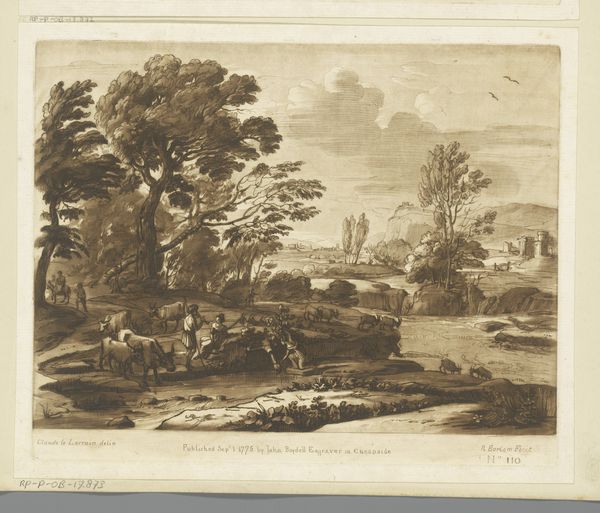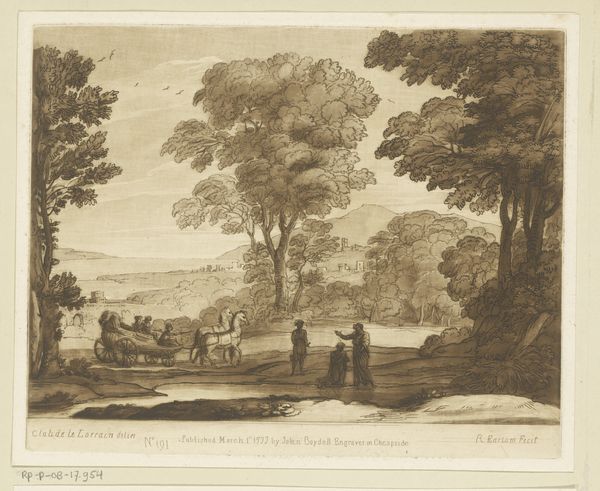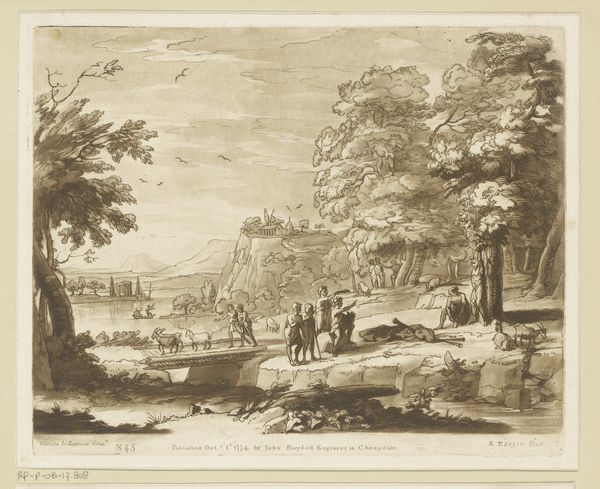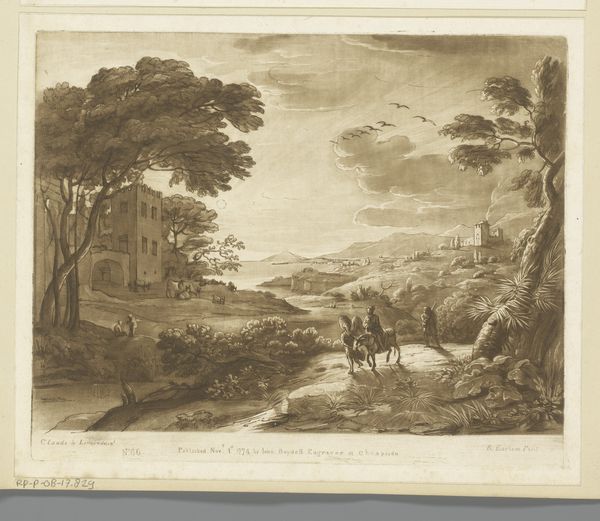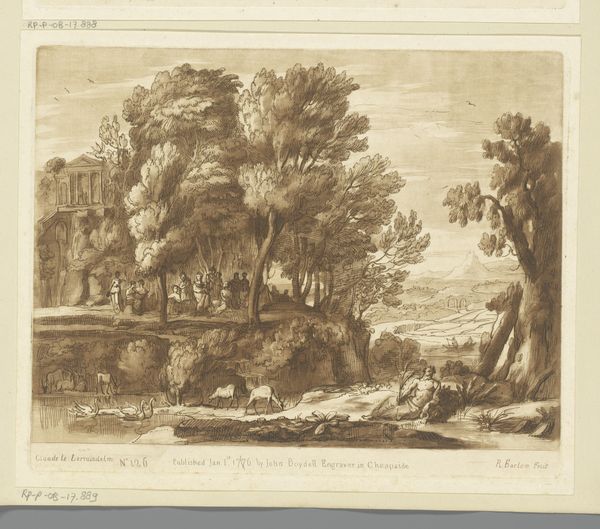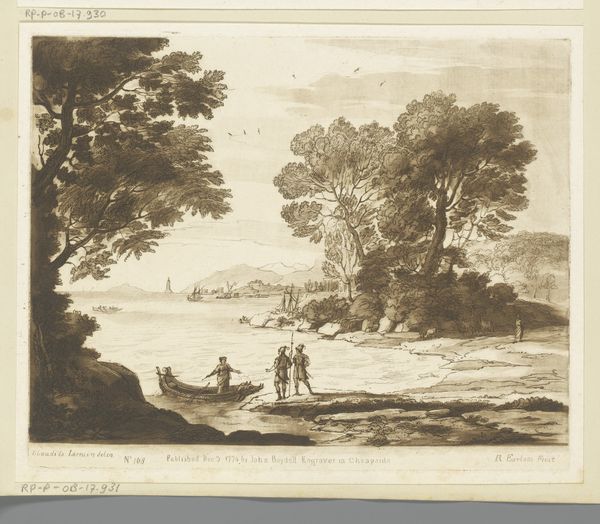
print, engraving
# print
#
landscape
#
classicism
#
history-painting
#
engraving
Dimensions: height 210 mm, width 258 mm
Copyright: Rijks Museum: Open Domain
Curator: This is Richard Earlom’s engraving, "Coastal View with Ruins and Jonah and the Whale," likely from 1777, currently held here at the Rijksmuseum. Editor: It's so evocative! The monochrome palette really lends this scene an ancient, almost mythical quality. The classical ruin on the left paired with that whale...there is something almost mournful, perhaps speaking to the temporal nature of empires and the enduring power of myth. Curator: What fascinates me is Earlom’s role as the engraver, interpreting another artist's original design – Claude Lorrain, if the notation on the work is accurate. The etching and engraving process involves labor, skill, and time – layering meaning in how a landscape gains representation. It underscores art-making as an inherently social process. Editor: Indeed, and situating it in its social context allows us to see how images function and what kind of narrative and ideology they propagated. The ruin itself stands for a nostalgia and interest in antiquity that often masked colonial desires and projections of power, with Jonah possibly being coded as an enslaved African being swallowed by the imperial force embodied as Leviathan. Curator: The printing technology, like the mezzotint style, enables replication and circulation of this composition. Its material form gives insight into patterns of taste and commerce. Whose homes might have displayed these views? What economic structures supported their production? Editor: These are crucial points. By examining Earlom’s print as a commodity, we gain a critical insight into the broader social and cultural milieu in which such imagery played a significant part, influencing social identities and political positions. How can this print expand our understanding of myth? Curator: It speaks to me of the industrial processes of art production and consumption. And I return to Earlom's expert translation of tones and textures of the scene into precise linear details – this highlights how essential technical skills are to both enabling and mediating artistic meaning. Editor: It highlights so many intersectional aspects. It challenges us to view our own contemporary artistic and economic production from the outside as well as within! Curator: It is always vital to connect our critical thinking about history with present urgencies. Editor: Precisely, to re-evaluate. Thank you for your expertise.
Comments
No comments
Be the first to comment and join the conversation on the ultimate creative platform.

